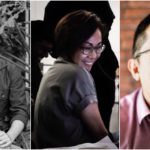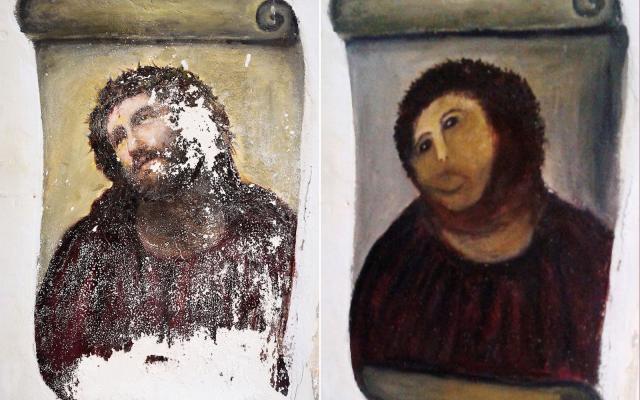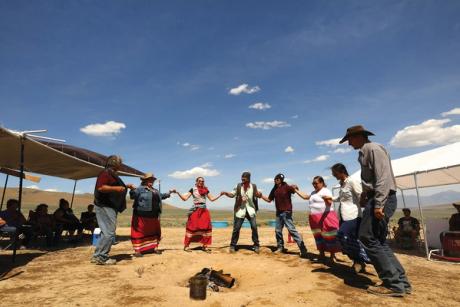Hueso de culebra (Installation #2)
2021 - Sculpture (Sculpture)
125 x 5 cm
Christian Salablanca
Hueso de culebra (Snake Bone) arises from the stories that the artist’s grandmother used to tell him as a child about her father’s medical and spiritual practices in the southern part of Costa Rica, close to the border with Panama. One of them revolved around a plant that had various uses, from healing poisonous snake bites to predicting the future. She said, for example, that if one came across this plant during a period of drought, it could mean trouble was coming. These family stories had been told to her by the artist’s great-grandfather, who lived in and with the mountain, and thus, natural medicine, the territory and the animals were part of his daily life. (Snake Bone [Installation #2]) is part of an on-going project that addresses ancestral forms of knowledge, natural medicine and myths, especially through the artist’s interest in the figure of the snake, whose image is frequent in ancient writings of occult botany and magical plant manuals, as well as in the mythology of various cultures including those of Southern Costa Rica. Also interested in the Ouroboros –a snake that eats its tail as a symbol of eternal effort–, Salablanca relates this image to the continuous learning experiences that take place in rural and peripheral areas, where education is not always institutionalized and knowledge is transmitted and kept alive orally through generations. The Hueso de culebra project involves a personal quest that allows the recognition and validation of the ways of knowing that come from living and working with natural entities. It is comprised of a series of sculptures that adapt to the location in which they are to be exhibited through the artist’s instructions. The work consists of a snake-shaped sculpture made of charcoal with an “eraser” head and a tail made of blown glass containing medicinal plants according to the location where the work will be exhibited (or collected). The sculpture is displayed after staining or drawing on the base where it sits suggesting the way “other” forms of knowledge affect institutionalized epistemologies.
Costa Rican artist Christian Salablanca Díaz has developed a body of work around the phenomenon and experience of violence and the ways in which it generates, determines, and conditions history, society, and politics. Methodologically, he uses field studies to create affective encounters that have to do with the territories and populations of Central and South America as well as the Caribbean. Salablanca’s interdisciplinary work is a radical consideration on the cultural relations of violent systems: from the human to the animal, from language to symbolic memory and from the centers of power to the periphery. More recently, Salablanca’s artistic processes have been nurtured by myths and narratives that arise from family encounters with atavistic objects and stories. For the artist, it is important to recuperate and reclaim stories from oral tradition that explain, articulate or mediate different forms of symbolic and traditional knowledge: through narration, Salablanca develop installations, sculptures, drawings and performances and speak of processes of cultural vindication. Salablanca holds a degree in Arts and Visual communication with an emphasis on sculpture from the Universidad Nacional de Costa Rica. He has exhibited widely throughout Latin America and Europe and is currently doing a residency at Gasworks, London.
Colors:
Related works sharing similar palette
» see more

© » ARTS EQUATOR
Podcast Interview: Performance Photographers | Arts Equator Thinking and Talking about Arts and Culture in Southeast Asia Festival (Podcast) Crispian Chan (by Izdiyad Ahmad), Bernie Ng (by Biru Chua), Kuang Jingkai April 24, 2019 Duration: 45 min In this interview with Crispian Chan , Bernie Ng and Kuang Jingkai , three photographers of theatre and dance, we get to know more about a profession that’s sometimes taken for granted but is an essential aspect of the packaging of a performance...

© » KADIST
Erin Jane Nelson
2019In Erin Jane Nelson’s 2019 body of work Av, panels are covered in collaged images and shellacked with resin or epoxy: photographs of plants intermingle with pictures of men and women engaging in various spiritual activities, cartoons of mothers and their children, or black and white images of window panes...

© » ART & OBJECT
5 Art Restoration Fails That Will Blow Your Mind | Art & Object Skip to main content Subscribe to our free e-letter! Webform Your Email Address Role Art Collector/Enthusiast Artist Art World Professional Academic Country USA Afghanistan Albania Algeria American Samoa Andorra Angola Anguilla Antarctica Antigua & Barbuda Argentina Armenia Aruba Ascension Island Australia Austria Azerbaijan Bahamas Bahrain Bangladesh Barbados Belarus Belgium Belize Benin Bermuda Bhutan Bolivia Bosnia & Herzegovina Botswana Bouvet Island Brazil British Indian Ocean Territory British Virgin Islands Brunei Bulgaria Burkina Faso Burundi Cambodia Cameroon Canada Canary Islands Cape Verde Caribbean Netherlands Cayman Islands Central African Republic Ceuta & Melilla Chad Chile China Christmas Island Clipperton Island Cocos (Keeling) Islands Colombia Comoros Congo - Brazzaville Congo - Kinshasa Cook Islands Costa Rica Croatia Cuba Curaçao Cyprus Czechia Côte d’Ivoire Denmark Diego Garcia Djibouti Dominica Dominican Republic Ecuador Egypt El Salvador Equatorial Guinea Eritrea Estonia Eswatini Ethiopia Falkland Islands Faroe Islands Fiji Finland France French Guiana French Polynesia French Southern Territories Gabon Gambia Georgia Germany Ghana Gibraltar Greece Greenland Grenada Guadeloupe Guam Guatemala Guernsey Guinea Guinea-Bissau Guyana Haiti Heard & McDonald Islands Honduras Hong Kong SAR China Hungary Iceland India Indonesia Iran Iraq Ireland Isle of Man Israel Italy Jamaica Japan Jersey Jordan Kazakhstan Kenya Kiribati Kosovo Kuwait Kyrgyzstan Laos Latvia Lebanon Lesotho Liberia Libya Liechtenstein Lithuania Luxembourg Macao SAR China Madagascar Malawi Malaysia Maldives Mali Malta Marshall Islands Martinique Mauritania Mauritius Mayotte Mexico Micronesia Moldova Monaco Mongolia Montenegro Montserrat Morocco Mozambique Myanmar (Burma) Namibia Nauru Nepal Netherlands Netherlands Antilles New Caledonia New Zealand Nicaragua Niger Nigeria Niue Norfolk Island Northern Mariana Islands North Korea North Macedonia Norway Oman Outlying Oceania Pakistan Palau Palestinian Territories Panama Papua New Guinea Paraguay Peru Philippines Pitcairn Islands Poland Portugal Puerto Rico Qatar Romania Russia Rwanda Réunion Samoa San Marino Saudi Arabia Senegal Serbia Seychelles Sierra Leone Singapore Sint Maarten Slovakia Slovenia Solomon Islands Somalia South Africa South Georgia & South Sandwich Islands South Korea South Sudan Spain Sri Lanka St...
Related works found in the same semantic group
» see more

© » KADIST
Alicia Smith
2018The title of Alicia Smith’s video work, Teomama , means “God Carrier” in the Aztec language of Nahuatl...

© » THEARTNEWSPER
Nevada lithium mine threatens cultural sites Art market Museums & heritage Exhibitions Books Podcasts Columns Technology Adventures with Van Gogh Search Search Heritage news Nevada lithium mine threatens cultural sites The US federal government’s manoeuvres to boost domestic lithium extraction are raising fears from tribal communities about archaeological and environmental impacts Gabriella Angeleti 8 December 2023 Share Members of the Fort McDermitt Paiute-Shoshone tribe gather to oppose the Thacker Pass lithium mine Photo: Carolyn Cole/Los Angeles Times via Getty Images The construction of an open-pit lithium mine in northern Nevada, which is scheduled to begin full-fledged operation in 2026, will have irreversible effects on the environment and cultural heritage sites in the region, according to archaeologists, environmentalists and Native American communities who oppose the project...

© » HYPERALLERGIC
Archaeologists Find Evidence of Hallucinogenic Drug in Ancient Rome Skip to content A bust of Emperor Trajan surrounded by black henbane seends and flowers and a femur discovered by archaeologists (edit Valentina Di Liscia/ Hyperallergic ) Two new archaeological finds suggest Roman subjects at the northern edge of the ancient empire used a hallucinogenic and poisonous plant called black henbane, the effects of which were described by Greek philosopher Plutarch as “not so properly called drunkenness” but rather “alienation of mind or madness.” Dutch zooarchaeologists Maaike Groot and Martijn van Haasteren and archaeobotanist Laura I...


